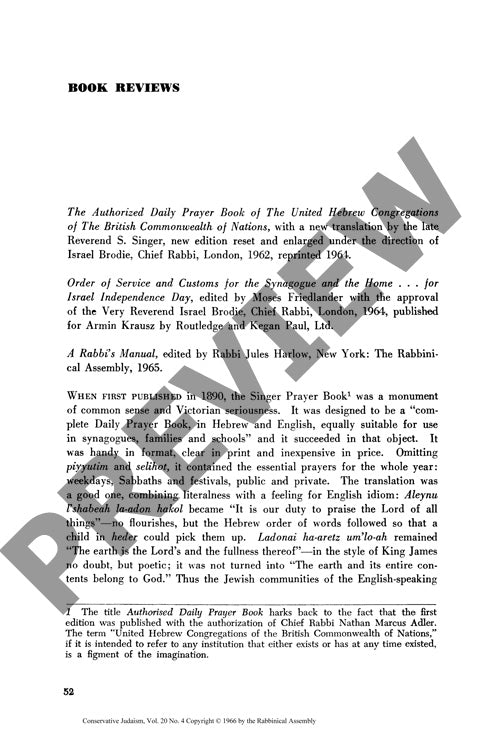Book Reviews
Couldn't load pickup availability
A stark divide emerges between Orthodox stagnation and Conservative dynamism in three influential Jewish liturgical works from the 1960s. Through critical examination of textual content, editorial decisions, and typographical quality, significant contradictions surface in how different branches of Judaism approached liturgical development during this pivotal decade. The revised Singer Prayer Book (1962) exhibits what can only be described as "mental and spiritual arthritis," with poor typography, deliberate omission of Holocaust references, and erasure of Liberal Jewish contributions to Orthodox liturgy. While an independently published liturgical guide for Israel Independence Day (1964) attempted to fill gaps left by religious authorities, it remained constrained by Orthodox theological boundaries. The Rabbinical Assembly's Rabbi's Manual (1965) stands apart, successfully bridging tradition and innovation while serving contemporary pastoral needs. This comparative analysis reveals that meaningful liturgical evolution demands both the courage to engage with modern Jewish experience and the wisdom to maintain traditional continuity - a balance notably absent in official Orthodox publications of the period but achieved in Conservative Jewish scholarship.

More Information
-
Physical Description
-
Publication Information
Published 1966
ISBN
-
Publication Credits

